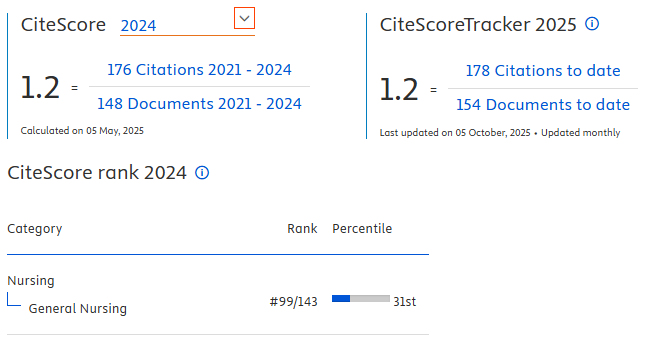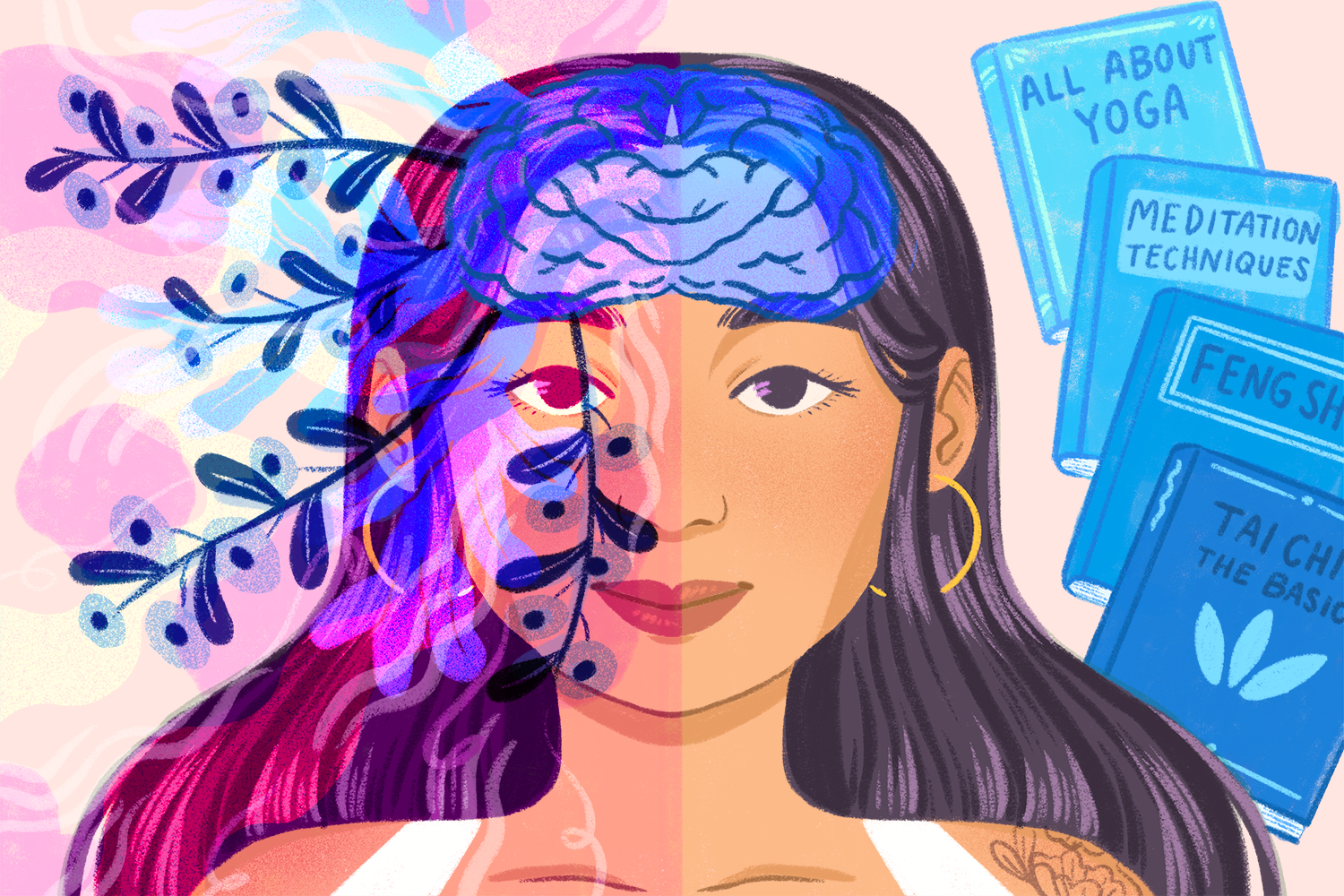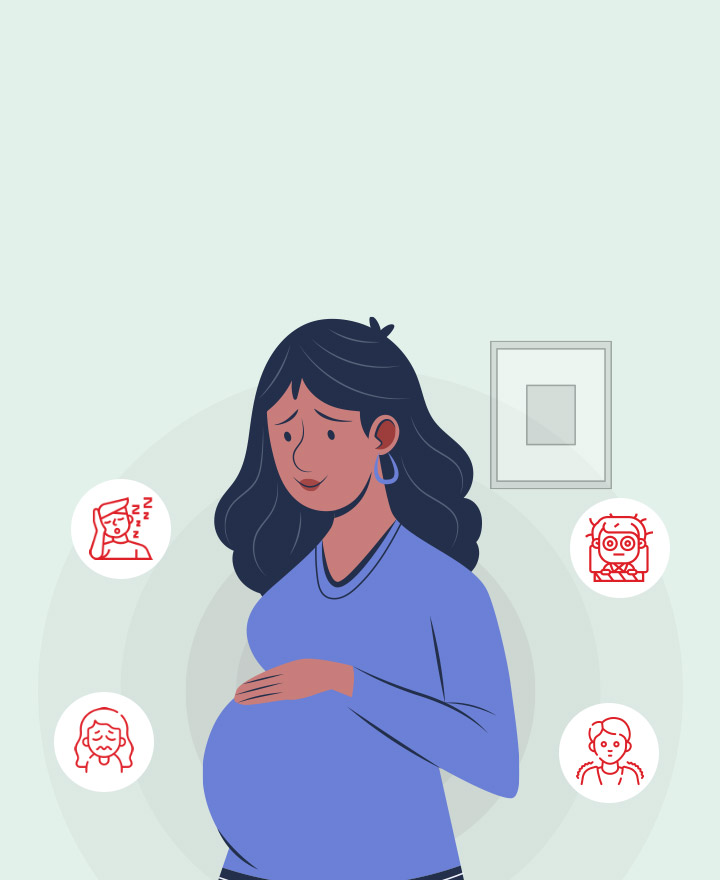The predictor of non-suicidal self-injury behavior among adolescents: a cross-sectional study
Downloads
Introduction: Non-Suicidal Self-Injury (NSSI) among adolescents is a prevalent issue in Indonesia. Comprehensive understanding of NSSI is essential for uncovering the factors that trigger and predispose adolescents to such behavior. This knowledge serves as a foundation for crafting targeted nursing interventions to address and mitigate NSSI among this vulnerable population. This study aimed to identify determinant factors contributing to the occurrence of Non-Suicidal Self-Injury behavior in adolescents.
Methods: The study employed a cross-sectional approach conducted between October and December 2023, with 570 respondents selected through simple random sampling. Socio-demographic, precipitating, and predisposing factors were measured using a checklist sheet. The Self-Harm Inventory (SHI) instrument was utilized to assess NSSI. Data analysis involved Pearson correlation and multiple regression to examine the relationships between variables.
Results: The study revealed significant relationships among five variables. Gender (p-value = 0.004), bullying (p-value = 0.002), disappointment (p-value = 0.001), sharing place (p-value = 0.002), and communication pattern (p-value = 0.010) were identified as factors associated with Non-Suicidal Self-Injury behavior in adolescents. On the other hand, personality (p-value = 0.174), environment (p-value = 0.260), coping mechanism (p-value = 0.458), and parenting style (p-value = 0.054) showed no association with Non-Suicidal Self-Injury behavior.
Conclusions: The findings underscore the significance of disappointment and the absence of a supportive environment in influencing NSSI. This highlights important considerations for healthcare professionals, educators, and policymakers. Strategies should encompass comprehensive approaches, early detection, and targeted interventions to foster supportive environments and address the complex nature of NSSI among adolescents.
Alifiando, B. K., Pinilih, S. S. and Amin, M. K. (2022) ‘Gambaran Kecenderungan Perilaku Self-Harm pada Mahasiswa Tingkat Akhir Studi’, Jurnal Keperawatan Karya Bhakti, 8(1), pp. 9–15. doi: 10.56186/jkkb.98.
Apsari, C. N. and Thesalonika (2021) ‘Perilaku Self-harm atau Melukai Diri Sendiri Yang Dilakukan Oleh Remaja’, Jurnal Pekerjaan Sosial, 4(2), pp. 213–224.
Baiden, P., Stewart, S. L. and Fallon, B. (2017) ‘The mediating effect of depressive symptoms on the relationship between bullying victimization and non-suicidal self-injury among adolescents: Findings from community and inpatient mental health settings in Ontario, Canada’, Psychiatry Research, 255, pp. 238–247. doi: 10.1016/j.psychres.2017.05.018.
Brown, R. C. et al. (2020) ‘“I just finally wanted to belong somewhere”—Qualitative Analysis of Experiences With Posting Pictures of Self-Injury on Instagram’, Frontiers in Psychiatry, 11. doi: 10.3389/fpsyt.2020.00274.
Cabrera, M. C., Larrañaga, E. and Yubero, S. (2022) ‘Bullying/Cyberbullying in Secondary Education: A Comparison Between Secondary Schools in Rural and Urban Contexts’, Child and Adolescent Social Work Journal. doi: 10.1007/s10560-022-00882-0.
Celdrán-Navarro, M. del C. et al. (2023) ‘Nursing Interventions against Bullying: A Systematic Review’, International Journal of Environmental Research and Public Health, 20(4), p. 2914. doi: 10.3390/ijerph20042914.
Elvira, S. R. and Sakti, H. (2021) ‘Eksplorasi Pengalaman Nonsuicidal Self-Injury (NSSI) Pada Wanita Dewasa Awal : Sebuah Interpretative Phenomenological Analysis’, Jurnal Empati, 10(5), p. 310.
Gao, Y. et al. (2023) ‘The Effects of Self-Criticism and Self-Compassion on Adolescents’ Depressive Symptoms and Nonsuicidal Self-Injury’, Psychology Research and Behavior Management, 16, pp. 3219–3230. doi: 10.2147/PRBM.S417258.
Geng, J. et al. (2023) ‘Relationship between Cyberbullying Victimization and Non-suicidal Self-Injury: Roles of Basic Psychological Needs Satisfaction and Self-Compassion’, Social Science Computer Review, 41(4), pp. 1276–1295. doi: 10.1177/08944393221074602.
Gu, H., Fang, L. and Yang, C. (2023) ‘Peer Victimization and Adolescent Non-Suicidal Self-Injury: The Mediating Role of Alienation and Moderating Role of Mindfulness’, Journal of Interpersonal Violence, 38(3–4), pp. 3864–3882. doi: 10.1177/08862605221109903.
Hahn, G. (2023) ‘Bullying’, Revista Linguagem em Foco, 15(1), pp. 152–176. doi: 10.46230/2674-8266-15-7127.
Hasanah, E. et al. (2019) ‘Indonesian Adolescents Experience of Parenting Processes that Positively Impacted Youth Identity’, The Qualitative Report. doi: 10.46743/2160-3715/2019.3825.
Hidayat, Z., Permatasari, C. B. and Mani, L. A. (2022) ‘Cyber Violence and Bullying in Oline Game Addiction : a Phenomenological Study’, Journal of Theoretical and Applied Information Technology, 15, p. 2022. Available at: www.jatit.org.
Hidayati, F., Fanani, M. and Mulyani, S. (2021) ‘Prevalensi dan Fungsi Melukai Diri Sendiri pada Mahasiswa’, in antangan Pembelajaran Komprehensif untuk Mengembangkan Karakter peserta didik : Berdasarkan Pendekatan Psikologi Positif. Malang.
Huang, H. et al. (2022) ‘A meta-analysis of the relationship between bullying and non-suicidal self-injury among children and adolescents’, Scientific Reports, 12(1). doi: 10.1038/s41598-022-22122-2.
Huang, X. et al. (2023) ‘The Effect of Loneliness on Non-Suicidal Self-Injury Behavior in Chinese Junior High School Adolescents: A Moderated Mediation Model’, Psychology Research and Behavior Management, Volume 16, pp. 1831–1843. doi: 10.2147/PRBM.S410535.
Kaligis, F. et al. (2021) ‘Mental Health Problems and Needs among Transitional-Age Youth in Indonesia’, International Journal of Environmental Research and Public Health, 18(8), p. 4046. doi: 10.3390/ijerph18084046.
Karneli, Y. et al. (2022) ‘Use of Behavioral Cognitive-Based Innovative Creative Counseling to Prevent Student Bullying Behavior’, Jurnal Neo Konseling, 4(4), p. 36. doi: 10.24036/00699kons2022.
Kataria, L. et al. (2023) ‘A Study to Assess the Prevalence of Non-suicidal Self Injury and Reasons for that Behaviour among Adults and their Coping’, International Neuropsychiatric Disease Journal, 19(3), pp. 35–43. doi: 10.9734/indj/2023/v19i3375.
Khazaie, H. et al. (2021) ‘When Non-Suicidal Self-Injury Predicts Non-Suicidal Self-Injury and Poor Sleep—Results from a Larger Cross-Sectional and Quasi-Longitudinal Study’, International Journal of Environmental Research and Public Health, 18(24), p. 13011. doi: 10.3390/ijerph182413011.
Kruzan, K. P., Muehlenkamp, J. J. and Claes, L. (2022) ‘Identity, self-blame, and body regard in NSSI: A test of moderated-mediation’, Comprehensive Psychiatry, 116, p. 152322. doi: 10.1016/j.comppsych.2022.152322.
Kusumadewi, A. F. et al. (2019) ‘Self-Harm Inventory(SHI) Versi Indonesia Sebagai Instrumen Dini Perilaku Self-Harm’, Jurnal Psikiatri Surabaya, 8(1), pp. 21–25.
Liu, J. et al. (2022) ‘The potential addictive mechanism involved in repetitive nonsuicidal self-injury: The roles of emotion dysregulation and impulsivity in adolescents’, Journal of Behavioral Addictions, 11(4), pp. 953–962. doi: 10.1556/2006.2022.00077.
Lutz, N. M. et al. (2023) ‘Why Is Non-suicidal Self-injury More Common in Women? Mediation and Moderation Analyses of Psychological Distress, Emotion Dysregulation, and Impulsivity’, Archives of Suicide Research, 27(3), pp. 905–921. doi: 10.1080/13811118.2022.2084004.
Mahtani, S., Melvin, G. A. and Hasking, P. (2018) ‘Shame Proneness, Shame Coping, and Functions of Nonsuicidal Self-Injury (NSSI) Among Emerging Adults’, Emerging Adulthood, 6(3), pp. 159–171. doi: 10.1177/2167696817711350.
Mitchell, E. et al. (2023) ‘Cognitive emotion regulation strategies among emerging adults with different self-harm histories’, Journal of Affective Disorders Reports, 14. doi: 10.1016/j.jadr.2023.100638.
Newman, K. L., Alexander, D. S. and Rovers, J. P. (2023) ‘Sadness, hopelessness and suicide attempts in bullying: Data from the 2018 Iowa youth survey’, PLOS ONE, 18(2), p. e0281106. doi: 10.1371/journal.pone.0281106.
Nursalam, N. et al. (2023) ‘Factors contributing to online game addiction in adolescents: a systematic review’, International Journal of Public Health Science (IJPHS), 12(4), p. 1763. doi: 10.11591/ijphs.v12i4.23260.
Park, H., In, S. and Hur, J.-W. (2022) ‘Association of socioeconomic status with nonsuicidal self-injury and suicidal ideation in young Korean adults’, International Journal of Social Psychiatry, 68(5), pp. 1127–1134. doi: 10.1177/00207640221104691.
Piarulli, F. M. et al. (2023) ‘Do Cortisol and Dehydroepiandrosterone Influence Motivational Factors for Non-Suicidal Self-Injury in Female Adolescents?’, Journal of Clinical Medicine, 12(5). doi: 10.3390/jcm12051924.
Putri, T. H. and Dewi, V. (2023) ‘Gambaran Perilaku Non-Suicidal Self Injury (NSSI) Pada Remaja di Masa Pandemi: Literature Review’, Jurnal Keperawatan Jiwa (JKJ) : Persatuan Perawat Nasional Indonesia, 11(2), pp. 415–428.
Rosario‐Williams, B., Kaur, S. and Miranda, R. (2021) ‘Examining decentering as a moderator in the relation between non‐suicidal self‐injury and suicide ideation via cognitive–affective factors’, Suicide and Life-Threatening Behavior, 51(4), pp. 741–754. doi: 10.1111/sltb.12747.
Sampasa-Kanyinga, H., Lalande, K. and Colman, I. (2020) ‘Cyberbullying victimisation and internalising and externalising problems among adolescents: the moderating role of parent–child relationship and child’s sex’, Epidemiology and Psychiatric Sciences, 29, p. e8. doi: 10.1017/S2045796018000653.
Serafini, G. et al. (2023) ‘The Relationship Between Bullying Victimization and Perpetration and Non-suicidal Self-injury: A Systematic Review’, Child Psychiatry and Human Development, 54(1), pp. 154–175. doi: 10.1007/s10578-021-01231-5.
Shafti, M. et al. (2021) ‘The Co-occurrence of Self-Harm and Aggression: A Cognitive-Emotional Model of Dual-Harm’, Frontiers in Psychology, 12. doi: 10.3389/fpsyg.2021.586135.
Sivasankari, N., Shaiju, B. and Rahman, J. (2016) ‘A Study to Assess the Self-Harm Behaviours among Adolescents in a Selected University of Delhi with A View to Develop and Disseminate An Information Booklet on Prevention of Self-Harm Behaviours’, International Journal of Science and Research (IJSR), 5(2), pp. 1531–1534. doi: 10.21275/v5i2.NOV161493.
Tsuno, K. (2022) ‘Do personal resilience, coping styles, and social support prevent future psychological distress when experiencing workplace bullying? Evidence from a 1-year prospective study’, BMC Psychology, 10(1), p. 310. doi: 10.1186/s40359-022-00991-6.
Vishwanath, R. and Praharaj, S. (2022) ‘Pain threshold and pain tolerance as a predictor of deliberate self-harm among adolescents and young adults: Concerns regarding methodology’, Indian Journal of Psychiatry, 64(1), p. 112. doi: 10.4103/indianjpsychiatry.indianjpsychiatry_471_21.
Wiguna, T. et al. (2021) ‘The Effect of Cyberbullying, Abuse, and Screen Time on Non-suicidal Self-Injury Among Adolescents During the Pandemic: A Perspective From the Mediating Role of Stress’, Frontiers in Psychiatry, 12. doi: 10.3389/fpsyt.2021.743329.
Wilkinson, P. O. et al. (2022) ‘Age and gender effects on non-suicidal self-injury, and their interplay with psychological distress’, Journal of Affective Disorders, 306, pp. 240–245. doi: 10.1016/j.jad.2022.03.021.
Copyright (c) 2024 Jurnal Ners

This work is licensed under a Creative Commons Attribution 4.0 International License.
Authors who publish with Jurnal Ners agree to the following terms:
- Authors transfer the Copyright and grant Jurnal Ners the right of first publication with the work simultaneously licensed under a Creative Commons Attribution 4.0 International License that allows others to remix, adapt and build upon the work with an acknowledgment of the work's authorship and of the initial publication in Jurnal Ners.
- Authors are permitted to copy and redistribute the journal's published version of the work (e.g., post it to an institutional repository or publish it in a book), with an acknowledgment of its initial publication in Jurnal Ners.
Jurnal Ners requires a formal written declaration and transfer of copyright from the author(s) for each article published. We, therefore, ask you to complete and return this form, retaining a copy for your own records. Your cooperation is essential and appreciated. Any delay will result in a delay in publication. The form can be downloaded HERE.
































